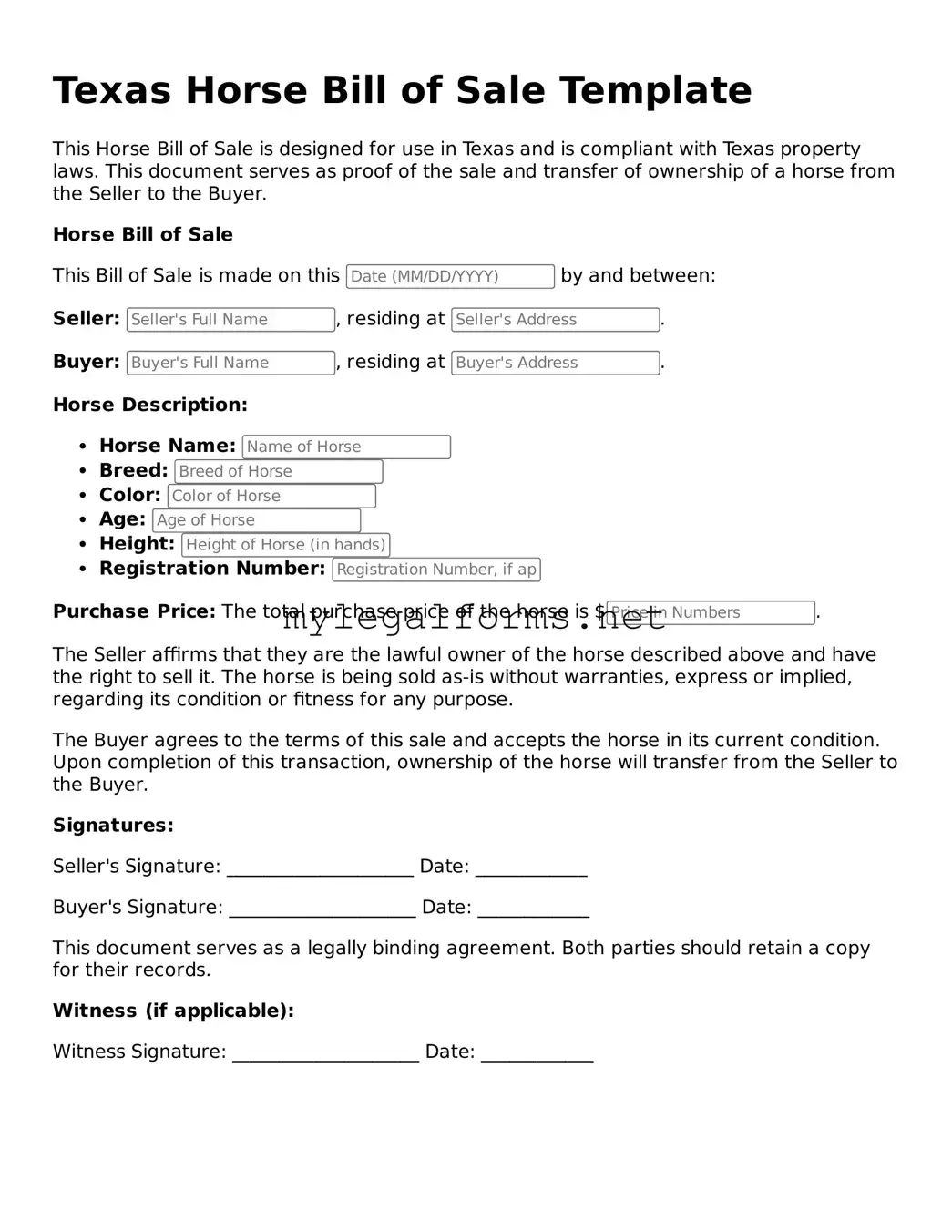Horse Bill of Sale Document for Texas State
The Texas Horse Bill of Sale form is a legal document that records the sale and transfer of ownership of a horse in Texas. This form is essential for both buyers and sellers, as it provides proof of the transaction and outlines the details of the sale. Understanding its components can help ensure a smooth and transparent exchange.
Launch Horse Bill of Sale Editor
